Demo video: Payment Terms Extended
What it does
Payment terms are the determination of the payment value and payment term for each purchase and sale transaction to ensure that payments are made on time and accurately. When using the accounting app, you will only need to declare the payment terms once, and apply them to orders and invoices, then the payment schedule will be automatically calculated by the system.
In order to calculate the due date flexibly and accurately with the actual situation of the business, we added two more conditions on the payment terms so that accountants have more choices in tracking debts.
Key Features
Allow to configure the due date in Payment Terms with:
- Fixed Day of Next X Month(s);
- Last Day of Next X Month(s).
Where X is the number of months defined by the users.
Supported Editions
- Community Edition
- Enterprise Edition
Installation
- Navigate to Apps.
- Search with keyword to_payment_terms_extended.
- Press Install.
Instruction
Instruction video: Payment Terms Extended
Add two options for lines on payment terms. Go to Accounting > Configuration > Payment Terms > Create, in the Due Date Computation field, two more conditions have been added to determine the payment term including:
- Fixed Day of Next X Month(s);
- Last Day of Next X Month(s).
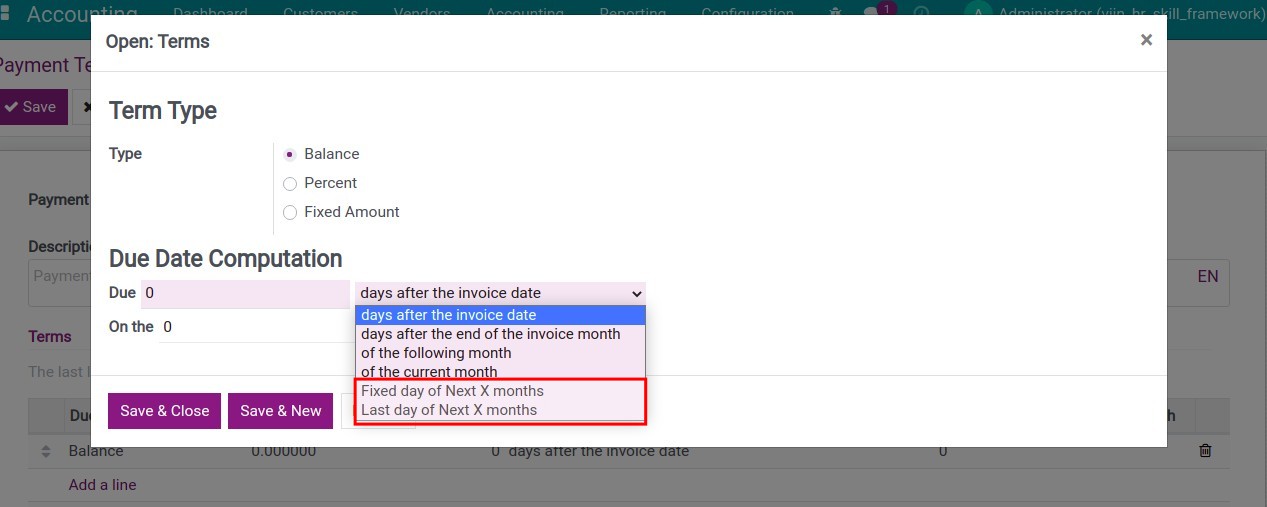
1. Fixed Day of Next X Month(s)
With this option, you will choose the exact date and number of the next month to pay.
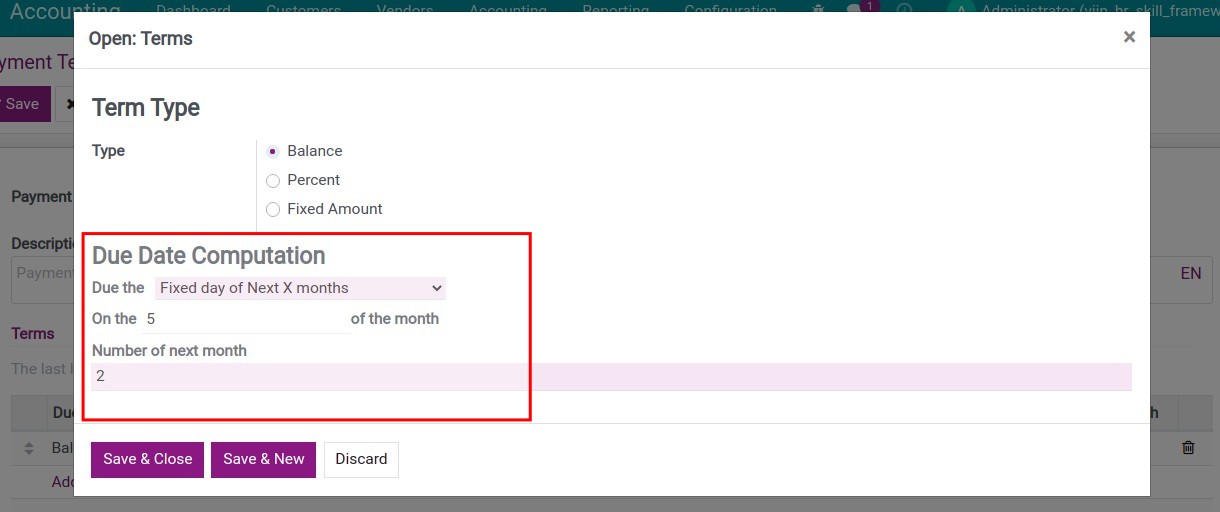
For example:
A Vendor bill was created on 10/20/2022.
The Payment term is created with the condition to determine the payment term as Fixed day of Next X months:
- On the 5th of the month;
- The next number of months is 2.
=> Due date is 5/12/2022.
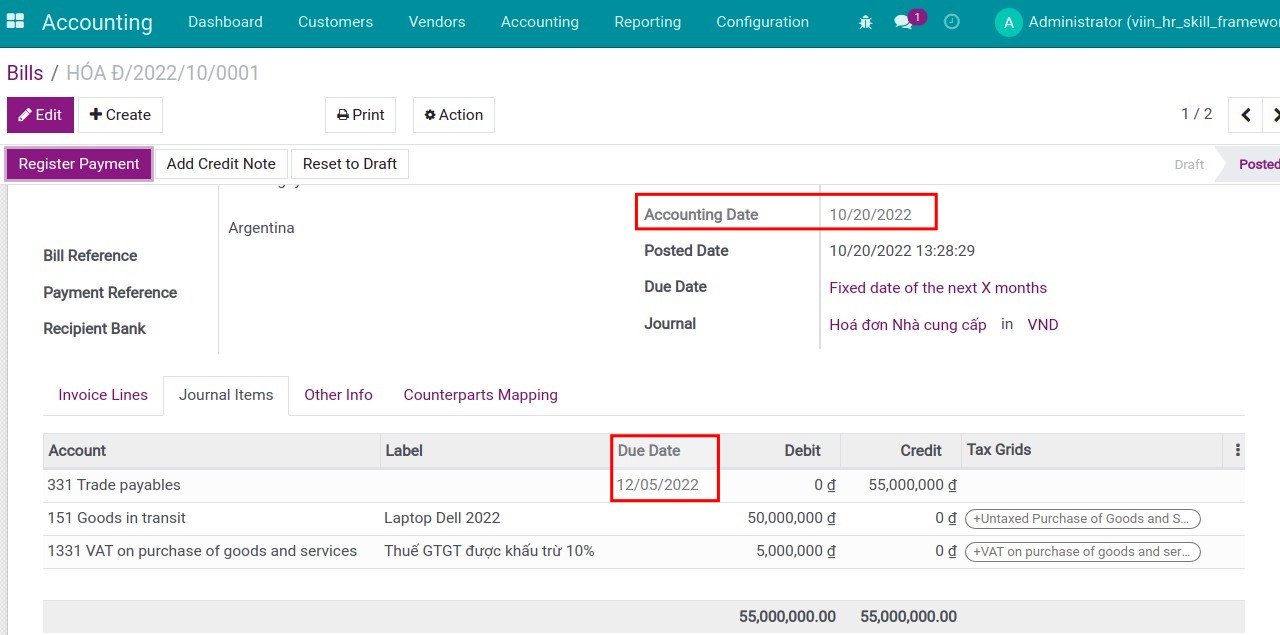
2. Last Day of Next X Month(s)
With this option, you will choose the number of the next month and will always pay on the last day of that month.
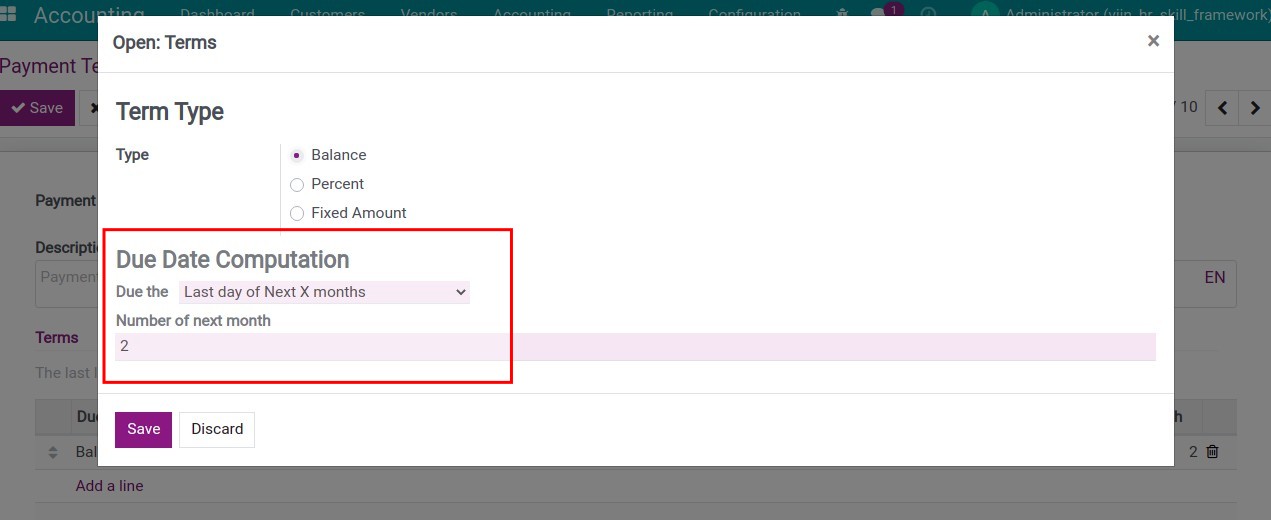
Similar to the example above:
A Vendor bill was created on 10/20/2022.
The Payment term is created with the condition to determine the payment term as Last day of Next X months:
- The next number of months is 2.
=> Due date is December 31, 2022.
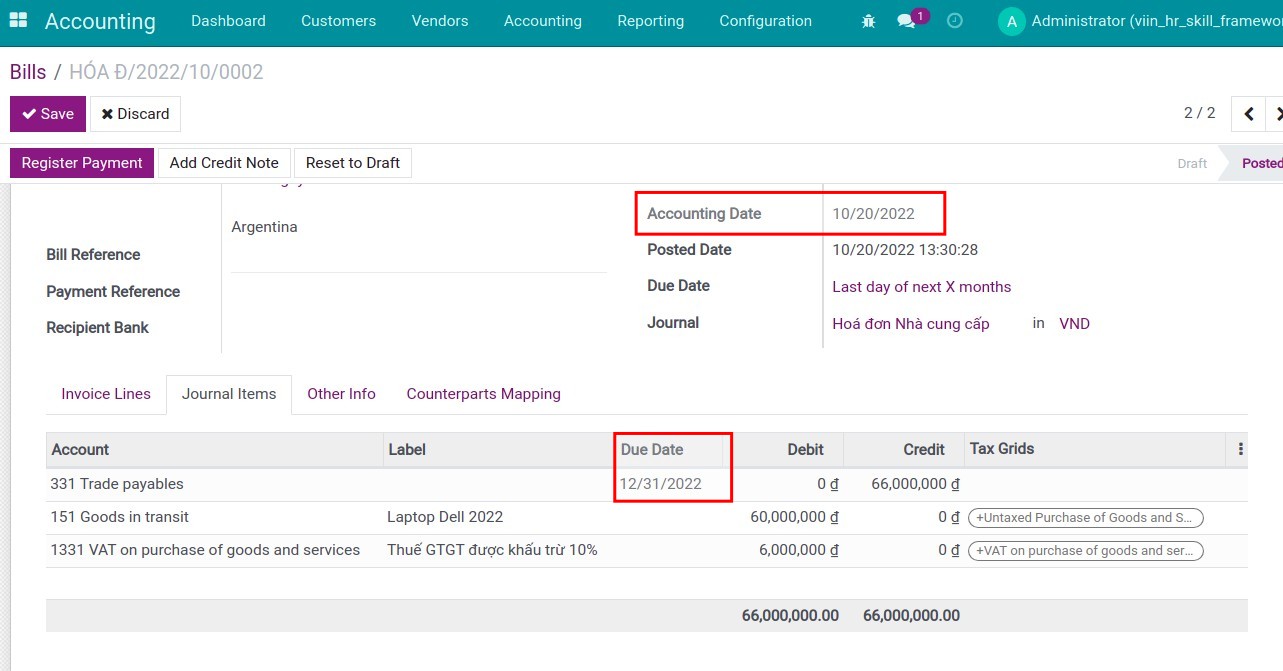
This software and associated files (the "Software") may only be
used
(executed, modified, executed after modifications) if you have
purchased a
valid license from the authors, typically via Odoo Apps,
or if you
have
received a written agreement from the authors of the
Software (see the
COPYRIGHT file).
You may develop Odoo modules that use the Software as a library
(typically
by depending on it, importing it and using its
resources), but
without
copying any source code or material from the
Software. You may distribute
those modules under the license of your
choice, provided that this
license
is compatible with the terms of
the Odoo Proprietary License (For
example:
LGPL, MIT, or proprietary
licenses similar to this one).
It is forbidden to publish, distribute, sublicense, or sell
copies of the
Software or modified copies of the Software.
The above copyright notice and this permission notice must be
included in
all copies or substantial portions of the Software.
THE SOFTWARE IS PROVIDED "AS IS", WITHOUT WARRANTY OF ANY KIND,
EXPRESS OR
IMPLIED, INCLUDING BUT NOT LIMITED TO THE WARRANTIES OF
MERCHANTABILITY,
FITNESS FOR A PARTICULAR PURPOSE AND
NONINFRINGEMENT. IN NO EVENT
SHALL THE
AUTHORS OR COPYRIGHT HOLDERS
BE LIABLE FOR ANY CLAIM, DAMAGES OR OTHER
LIABILITY, WHETHER IN AN
ACTION OF CONTRACT, TORT OR OTHERWISE,
ARISING
FROM, OUT OF OR IN
CONNECTION WITH THE SOFTWARE OR THE USE OR OTHER
DEALINGS IN THE
SOFTWARE.
